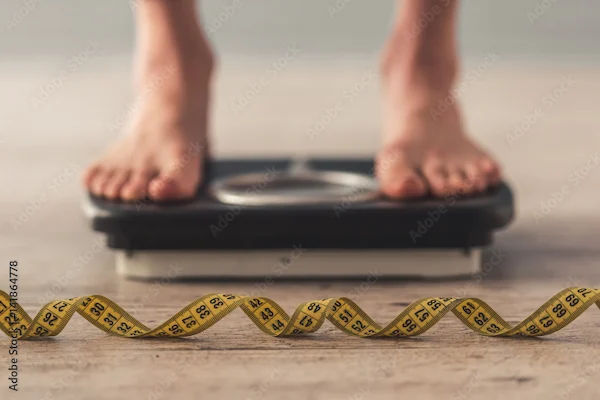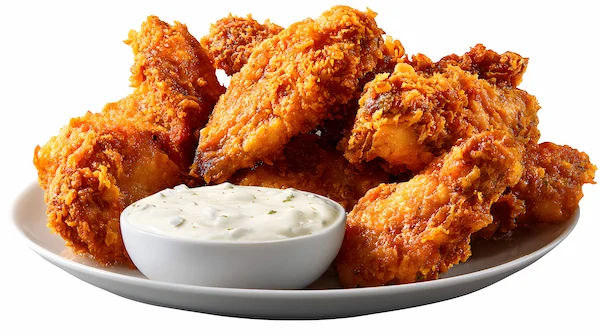The Ultimate Weight Loss Diet Plan: A Science-Backed Guide
Discover a science-backed weight loss diet plan. Learn how to set calories and macros, build meals, manage plateaus, and use practical strategies for sustainable fat loss.

Written by Dr. M L Ezhilarasan
Reviewed by Dr. Rohinipriyanka Pondugula MBBS
Last updated on 28th Oct, 2025

Introduction
Losing weight isn’t just about eating less—it’s about eating smarter. With so many plans claiming to be “the best,” it’s easy to feel overwhelmed. This guide cuts through the noise to help you build a personalised weight loss diet that works in real life, not just on paper. You’ll learn how weight loss actually works, which eating patterns fit different lifestyles, how to set calories and macros, what to put on your plate, and how to keep momentum when life gets busy. We’ll add practical tools for meal prep, portion control, cravings, sleep, stress, and exercise—plus a 7-day menu outline to get you started. Throughout, you’ll find evidence-based tips from trusted sources and data-backed strategies you can use today. Whether you prefer low-carb, Mediterranean, vegetarian, or a flexible plan, this step-by-step approach will help you lose weight safely and sustainably. Let’s build a weight loss diet that you can live with—and enjoy.
How Weight Loss Works: Energy, Metabolism, and Your “Set Point”
Here's how your body responds to calories, activity, and metabolism:
Calorie deficits and safe rates of fat loss
Weight loss happens when you consistently eat fewer calories than you burn. A practical rule: a daily deficit of ~500 calories yields about 0.5 kg (1 lb) per week for many people, though individual results vary due to body size, activity, and metabolic differences. Health authorities consider 0.5–1 kg (1–2 lb) per week a safe, sustainable pace for most adults. Going faster often increases hunger, fatigue, and muscle loss, which can raise the risk of regaining weight later.
Metabolic adaptation, NEAT, and why plateaus happen
“Metabolic adaptation” refers to changes that reduce calorie burn during weight loss: you weigh less (so movement costs fewer calories), you may unconsciously move less (NEAT drops), and your resting metabolic rate can dip slightly beyond what’s predicted by weight loss alone. That’s one reason plateaus happen even when you’ve “been good.” The fix isn’t to starve more—it’s to re-check portions, increase daily steps and resistance training, and ensure adequate protein and sleep. Small adjustments add up. Authorities emphasize building sustainable routines over extreme restriction.
Consult Top Specialists
Choose a Weight Loss Diet Pattern You Can Keep
Here's how to pick a diet you can stick with:
Low-carb vs low-fat: what big trials actually show
Large randomised trials comparing low-carb versus low-fat diets show minimal differences in long-term weight loss when calories and adherence are matched. In the DIETFITS trial, both groups lost similar amounts at 12 months; individual response varied widely. The takeaway: choose the pattern that best controls your hunger and fits your tastes and culture—because adherence predicts success.
Mediterranean, vegetarian/vegan, and high-protein approaches
- Mediterranean diet for weight loss: Emphasises vegetables, fruits, whole grains, legumes, nuts, olive oil, and fish. It’s linked with cardiometabolic benefits and is easy to maintain for many. It naturally increases fibre and unsaturated fats, aiding satiety.
- Vegetarian/vegan weight loss diet: Fibre-rich and often lower in energy density. Pay attention to protein (tofu, tempeh, lentils, Greek-style soy yoghurt) and vitamin B12.
- High-protein: Prioritising 1.2–1.6 g/kg body weight per day boosts satiety and helps preserve lean mass during a deficit.
The adherence principle: the “best” diet is the one you follow
No one-size-fits-all plan works for everyone. The best diet is the one you enjoy, can afford, and can repeat on busy weeks. Use personal data (hunger levels, energy, digestive comfort, weight trend) to refine your plan over 2–4 weeks.
Set Calories and Macros for Your Goal
Here's how to calculate calories and macro targets:
How to calculate needs and choose a deficit
- Estimate maintenance: Body weight (lb) × 13–15 for a quick daily calorie estimate (use the low end if sedentary, high end if active), or use a validated calculator.
- Choose a deficit: 300–500 kcal/day for steady loss; smaller deficits for lighter or older individuals; larger deficits only short term and with careful planning.
- Reassess every 2–4 weeks: If weight is not trending down, decrease calories by ~100–150/day or increase activity.
Protein, fibre, carbs, and fats: practical targets
- Protein: 1.2–1.6 g/kg body weight per day (e.g., 75–100 g for a 140-lb/63-kg person). Supports satiety and muscle retention.
- Fibre: 25–38 g/day. Focus on legumes, vegetables, fruits, whole grains, and seeds.
- Carbs and fats: Allocate remaining calories to your preference. Low-carb works best for some appetites; others feel better higher-carb with whole grains and beans. Favour minimally processed sources.
- Example: 1800 kcal target with 120 g protein (480 kcal), 60–70 g fat (540–630 kcal), and the remainder from carbs (690–780 kcal).
Hydration and electrolytes: overlooked essentials
Aim for pale-yellow urine most of the day. If you train hard or eat low-carb (which can increase water and sodium loss), ensure adequate sodium, potassium, and magnesium from foods (or as advised by a clinician).
Build Your Plate and Pantry
Here's how to structure meals for satiety and balance:
The 3-2-1 Plate Method for high satiety and balance
At most meals:
- 3 parts produce: Fill half your plate with non-starchy veg, plus a piece of fruit daily.
- 2 parts protein: A palm-size portion (20–40 g protein) from lean meat, fish, eggs, tofu, tempeh, Greek yoghurt, or lentils.
- 1 part smart carbs or healthy fats: Quarter plate of whole grains/legumes or a thumb of fats (olive oil, nuts, seeds, avocado). Adjust carbs/fats based on personal preference and total calories.
High-satiety, low energy-density foods and smart swaps
- Choose foods with high protein and fibre per calorie: Greek yoghurt, cottage cheese, eggs, legumes, edamame, skinless chicken, oily fish, tofu/tempeh, berries, apples, leafy greens, mushrooms, zucchini, oats, chia seeds.
- Smart swaps: Air-popped popcorn for chips, Greek yoghurt for sour cream, zucchini noodles or lentil pasta for refined pasta, sparkling water with citrus for soda.
Budget-friendly grocery strategies
- Buy frozen veg and fruit (nutritious, affordable, no waste).
- Choose bulk legumes and whole grains (lentils, chickpeas, oats, brown rice).
- Pick value proteins (eggs, canned tuna/salmon, tofu, chicken thighs).
- Plan 2–3 “anchor” meals to repeat weekly for consistency and cost control.
Timing, Portions, and Mindful Eating
Here's how to manage eating windows, portions, and habits:
Intermittent fasting/time-restricted eating—pros and cons
Time-restricted eating (e.g., 10–12-hour eating window) can help some people control calories without meticulous tracking. Evidence suggests it works mainly by reducing overall intake, not because of special metabolic effects. If you overeat within the window or struggle with morning workouts, it may not suit you. Choose the approach that reduces mindless snacking and improves adherence.
Portion control tools and simple tracking methods
- Options: food scale, hand portions (palm protein, fist veg, cupped hand carbs, thumb fats), or photo logging.
- Track “big rocks” instead of every gram: protein, fibre, and total calories. Aim to hit protein and fibre targets daily and keep average weekly calories in range.
- Restaurant tips: Start with a salad or broth-based soup, choose grilled over fried, swap fries for veg, box half to go at the start.
Eating out, social events, and travel
- Pre-plan one anchor: hit your protein target before the event.
- Use “one indulgence” rule: choose either alcohol, dessert, or a rich entree—not all three.
- On travel days: pack protein-forward snacks (beef jerky, roasted chickpeas, Greek yoghurt, nuts), hydrate, and walk at the airport when possible.
Behaviour, Sleep, Stress, and Movement
Here's why habits, sleep, and activity matter for weight loss:
Habit loops, environment design, and motivation
Habits drive most eating decisions. Design your space for success: keep fruit at eye level, prep protein in advance, store treats out of sight. Attach new habits to existing ones (“after brewing coffee, I assemble my packed lunch”). Expect motivation to fluctuate; your system should carry you when willpower dips.
Sleep and stress hormones: hunger, cravings, and self-control
Short sleep and high stress can raise hunger hormones and increase cravings while lowering self-control. Many people spontaneously eat 200–500 extra calories after poor sleep. Aim for 7–9 hours. Wind down with a consistent routine, dim lights, and limits on late caffeine. Try brief daily stress buffers: brisk walks, 2–3 minutes of slow breathing, or journaling.
Resistance training and NEAT: protect muscle, burn more
Two to three full-body strength sessions per week protect lean mass during a calorie deficit and may slightly increase resting energy expenditure. Daily movement (NEAT)—steps, chores, standing breaks—can contribute hundreds of calories burned per day. A practical target is 7,000–10,000 steps/day, adjusted for your fitness. For fat loss, it’s hard to out-run a fork; use exercise to preserve muscle and maintain health while your diet does the heavy lifting.
Special Considerations, Supplements, and Medications
Here's what to consider if you have health conditions or want evidence-based support:
Diabetes, PCOS, thyroid, and older adults
- Diabetes: Focus on consistent carbs, fibre-rich foods, and protein to stabilise blood sugar. Mediterranean and low-carb patterns can be helpful; monitor glucose and medications with your clinician.
- PCOS: Higher protein and moderating refined carbs may reduce cravings and support insulin sensitivity. Resistance training helps.
- Thyroid issues: Hypothyroidism can reduce energy needs; partner with a doctor to optimise treatment before pushing calorie deficits.
- Older adults: Prioritise protein (1.2–1.6 g/kg) and resistance training to protect muscle and bone.
If you have metabolic or hormonal concerns, or if weight isn’t changing despite consistent effort, consult a clinician. If symptoms persist beyond two weeks or you need individualised guidance, consult a doctor online with Apollo 24|7 for further evaluation.
Evidence-based supplements and what to skip
- Helpful for some: whey/plant protein powder (convenience), creatine for strength, fibre supplements (e.g., psyllium) if you struggle to hit 25–38 g/day, omega-3s if intake is low.
- Mixed/limited evidence: green tea extract, caffeine (appetite suppression varies).
- Skip: “fat burners” with proprietary blends, stimulants without medical oversight, unregulated herbal products.
GLP-1s and medical support: who, when, and how
GLP-1–based medications (e.g., semaglutide) can significantly aid weight loss for people with obesity and certain comorbidities when combined with diet and behaviour change, under medical supervision. In clinical trials, average losses exceed those of lifestyle change alone. If considering medication, work with a physician to screen for contraindications and create a comprehensive plan. If your condition does not improve after lifestyle changes, book a physical visit to a doctor with Apollo 24|7.
7-Day Weight Loss Diet Plan, Tracking, and Plateaus
Here's a sample 7-day plan and tips to track results:
7-day sample menu outline with swaps
Target: 1600–1800 kcal/day (adjust based on your size and activity). Emphasise high protein (100–140 g/day) and fibre (25–35 g/day).
Day template (repeat with variety):
- Breakfast: Greek yoghurt parfait with berries, chia, and a handful of high-fibre cereal; or veggie omelette with a slice of whole-grain toast.
- Lunch: 3-2-1 Plate—grilled chicken or tofu, big salad with olive oil-lemon, quinoa or beans, fruit for dessert.
- Snack: Cottage cheese with pineapple, or roasted chickpeas and an apple.
- Dinner: Baked salmon (or paneer/tofu) with roasted vegetables and sweet potato; or lentil stew with a side salad.
- Dessert: Dark chocolate (10–15 g) or fruit.
Budget/vegetarian/Indian swaps:
- Protein: dal, chana, rajma, paneer, tofu, soy chunks.
- Carbs: roti (whole wheat), brown rice, millets.
- Fats: mustard oil/groundnut oil/olive oil, nuts, seeds.
- Flavour: spices (turmeric, cumin, coriander, chili, garam masala) for satiety and satisfaction.
How to track progress: scales, measurements, and non-scale wins
- Weigh 3–4 mornings/week and use a weekly average to smooth daily fluctuations.
- Track waist, hip, and thigh measurements every 2 weeks; progress photos monthly.
- Non-scale wins: improved energy, better sleep, more reps in the gym, looser clothes.
- Consider Labs: If you have a history of metabolic issues, checking HbA1c, fasting lipids, TSH, and vitamin D can inform your plan. Apollo 24|7 offers convenient home collection for tests like HbA1c or vitamin D.
Plateaus: diagnostics and fixes (from steps to sleep to fibre)
When progress stalls for 2–3 weeks:
- Audit intake: Portion creep? Weekend “extras”? Consider 1 week of precise tracking.
- Increase NEAT: Add 1,500–2,000 daily steps.
- Protein/fibre check: Hit 1.2–1.6 g/kg protein and 25–38 g fibre daily.
- Sleep/stress: Target 7–9 hours; add brief daily stress relief.
- Small nudge: Reduce calories by ~100–150/day if needed or add one extra training session.
Consult Top Specialists
Conclusion
A successful weight loss diet doesn’t require perfection or pain—it requires a plan you can repeat on your busiest weeks. Start with a modest calorie deficit, prioritise protein and fibre, and build satisfying meals with the 3-2-1 Plate. Choose an eating style that suits your tastes and culture—Mediterranean, low-carb, vegetarian, or flexible—and measure progress weekly, not daily. Expect plateaus; they’re normal. Use your data to troubleshoot: tighten portions, bump daily steps, lift weights, and support your appetite system with sleep and stress management. If you have medical conditions or need more help, a clinician can personalise targets and, when appropriate, discuss medications. With consistent application and small, steady improvements, you’ll not only lose weight—you’ll gain skills to maintain it. Ready to begin? Pick one breakfast, one lunch, and one dinner from the sample plan and repeat them for five days. Simplicity wins.
Consult Top Specialists

Ms. Malabika Datta
Dietician
17 Years • Msc. in Dietetics & Food Service Management
Kolkata
Dr Utsa Basu Clinic, Kolkata
(25+ Patients)

Neelanjana J
clinical nutrition
3 Years • Bsc., Msc. Nutrition and Dietetics.
Bengaluru
Apollo Clinic, JP nagar, Bengaluru

Dr Venkata Naga Sai Tribhushan Rambhatla
General Physician
3 Years • MBBS
Bengaluru
PRESTIGE SHANTHINIKETAN - SOCIETY CLINIC, Bengaluru

Dr. Chaithanya R
Internal Medicine Specialist Diabetologist
16 Years • MBBS, MD Internal Medicine, Fellowship in Diabetes(UK), CCEBDM(PHFI)
Bangalore
Apollo Clinic Bellandur, Bangalore
(75+ Patients)

Ms. Soma Saha
clinical nutrition
17 Years • B.Sc. - Home Science (Food & Nutrition), M.Sc. - Home Science (Food & Nutrition)
Kolkata
Dr Utsa Basu Clinic, Kolkata
(50+ Patients)
Consult Top Specialists

Ms. Malabika Datta
Dietician
17 Years • Msc. in Dietetics & Food Service Management
Kolkata
Dr Utsa Basu Clinic, Kolkata
(25+ Patients)

Neelanjana J
clinical nutrition
3 Years • Bsc., Msc. Nutrition and Dietetics.
Bengaluru
Apollo Clinic, JP nagar, Bengaluru

Dr Venkata Naga Sai Tribhushan Rambhatla
General Physician
3 Years • MBBS
Bengaluru
PRESTIGE SHANTHINIKETAN - SOCIETY CLINIC, Bengaluru

Dr. Chaithanya R
Internal Medicine Specialist Diabetologist
16 Years • MBBS, MD Internal Medicine, Fellowship in Diabetes(UK), CCEBDM(PHFI)
Bangalore
Apollo Clinic Bellandur, Bangalore
(75+ Patients)

Ms. Soma Saha
clinical nutrition
17 Years • B.Sc. - Home Science (Food & Nutrition), M.Sc. - Home Science (Food & Nutrition)
Kolkata
Dr Utsa Basu Clinic, Kolkata
(50+ Patients)
More articles from Diet for Weight Loss
Frequently Asked Questions
What’s the best diet plan for weight loss?
There’s no single “best”—low-carb, low-fat, Mediterranean, and vegetarian diets can all work if you maintain a calorie deficit and choose foods that keep you full. Focus on a high protein weight loss diet with plenty of fibre for better adherence.
How much protein should I eat to lose weight?
Aim for 1.2–1.6 g/kg body weight per day to support satiety and protect muscle during fat loss. For a 70-kg person, that’s about 85–110 g/day.
Is intermittent fasting necessary for fat loss?
No. Time-restricted eating can help some people reduce calories, but the key is the overall deficit. If it helps you control snacking and keeps energy steady, it can fit your plan.
I have PCOS. What weight loss diet works best?
A higher-protein, higher-fibre plan that moderates refined carbs can help appetite and blood sugar control. Resistance training is beneficial. For tailored advice, consult a clinician; if symptoms persist beyond two weeks, consult a doctor online with Apollo 24|7.
How do I break a weight loss plateau?
Verify intake (track for a week), increase steps by 1,500–2,000/day, hit protein and fibre targets, improve sleep, and consider a small calorie adjustment (~100–150/day). These weight loss plateau solutions address the most common causes.



